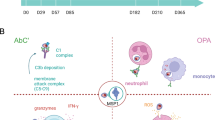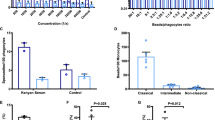Abstract
The mechanisms responsible for the immunosuppression associated with sepsis or some chronic blood infections remain poorly understood. Here we show that infection with a malaria parasite (Plasmodium berghei) or simple systemic exposure to bacterial or viral Toll-like receptor ligands inhibited cross-priming. Reduced cross-priming was a consequence of downregulation of cross-presentation by activated dendritic cells due to systemic activation that did not otherwise globally inhibit T cell proliferation. Although activated dendritic cells retained their capacity to present viral antigens via the endogenous major histocompatibility complex class I processing pathway, antiviral responses were greatly impaired in mice exposed to Toll-like receptor ligands. This is consistent with a key function for cross-presentation in antiviral immunity and helps explain the immunosuppressive effects of systemic infection. Moreover, inhibition of cross-presentation was overcome by injection of dendritic cells bearing antigen, which provides a new strategy for generating immunity during immunosuppressive blood infections.
This is a preview of subscription content, access via your institution
Access options
Subscribe to this journal
Receive 12 print issues and online access
$209.00 per year
only $17.42 per issue
Buy this article
- Purchase on Springer Link
- Instant access to full article PDF
Prices may be subject to local taxes which are calculated during checkout








Similar content being viewed by others
References
Wilson, N.S. & Villadangos, J.A. Regulation of antigen presentation and cross-presentation in the dendritic cell network: facts, hypothesis, and immunological implications. Adv. Immunol. 86, 241–305 (2005).
Heath, W.R. et al. Cross-presentation dendritic cell subsets, and the generation of immunity to cellular antigens. Immunol. Rev. 199, 9–26 (2004).
Sigal, L.J., Crotty, S., Andino, R. & Rock, K.L. Cytotoxic T-cell immunity to virus-infected non-haematopoietic cells requires presentation of exogenous antigen. Nature 398, 77–80 (1999).
Melief, C.J. Mini-review: Regulation of cytotoxic T lymphocyte responses by dendritic cells: peaceful coexistence of cross-priming and direct priming? Eur. J. Immunol. 33, 2645–2654 (2003).
Freigang, S., Egger, D., Bienz, K., Hengartner, H. & Zinkernagel, R.M. Endogenous neosynthesis vs. cross-presentation of viral antigens for cytotoxic T cell priming. Proc. Natl. Acad. Sci. USA 100, 13477–13482 (2003).
Norbury, C.C. & Sigal, L.J. Cross priming or direct priming: is that really the question? Curr. Opin. Immunol. 15, 82–88 (2003).
Medzhitov, R. Toll-like receptors and innate immunity. Nat. Rev. Immunol. 1, 135–145 (2001).
Garrett, W.S. et al. Developmental control of endocytosis in dendritic cells by Cdc42. Cell 102, 325–334 (2000).
West, M.A., Prescott, A.R., Eskelinen, E.L., Ridley, A.J. & Watts, C. Rac is required for constitutive macropinocytosis by dendritic cells but does not control its downregulation. Curr. Biol. 10, 839–848 (2000).
West, M.A. et al. Enhanced dendritic cell antigen capture via Toll-like receptor-induced actin remodeling. Science 305, 1153–1157 (2004).
Klinman, D.M. Immunotherapeutic uses of CpG oligodeoxynucleotides. Nat. Rev. Immunol. 4, 249–258 (2004).
Williamson, W.A. & Greenwood, B.M. Impairment of the immune response to vaccination after acute malaria. Lancet 1, 1328–1329 (1978).
Whittle, H.C. et al. T-cell control of Epstein-Barr virus-infected B cells is lost during P. falciparum malaria. Nature 312, 449–450 (1984).
Cohen, J. The immunopathogenesis of sepsis. Nature 420, 885–891 (2002).
Urban, B.C. & Roberts, D.J. Inhibition of T cell function during malaria: implications for immunology and vaccinology. J. Exp. Med. 197, 137–141 (2003).
Villadangos, J.A. & Heath, W.R. Life cycle, migration and antigen presenting functions of spleen and lymph node dendritic cells: limitations of the Langerhans cells paradigm. Semin. Immunol. 17, 262–272 (2005).
Wilson, N.S. et al. Most lymphoid organ dendritic cell types are phenotypically and functionally immature. Blood 102, 2187–2194 (2003).
De Smedt, T. et al. Regulation of dendritic cell numbers and maturation by lipopolysaccharide in vivo. J. Exp. Med. 184, 1413–1424 (1996).
Kamath, A.T. et al. The development, maturation, and turnover rate of mouse spleen dendritic cell populations. J. Immunol. 165, 6762–6770 (2000).
Edwards, A.D. et al. Toll-like receptor expression in murine DC subsets: lack of TLR7 expression by CD8α+ DC correlates with unresponsiveness to imidazoquinolines. Eur. J. Immunol. 33, 827–833 (2003).
Wilson, N.S., El-Sukkari, D. & Villadangos, J.A. Dendritic cells constitutively present self antigens in their immature state in vivo, and regulate antigen presentation by controlling the rates of MHC class II synthesis and endocytosis. Blood 103, 2187–2195 (2004).
Villadangos, J.A., Schnorrer, P. & Wilson, N.S. Control of MHC class II antigen presentation in dendritic cells: a balance between creative and destructive forces. Immunol. Rev. 207, 191–205 (2005).
Brocker, T., Riedinger, M. & Karjalainen, K. Targeted expression of major histocompatibility complex (MHC) class II molecules demonstrates that dendritic cells can induce negative but not positive selection of thymocytes in vivo. J. Exp. Med. 185, 541–550 (1997).
Smith, C.M. et al. Cutting Edge: Conventional CD8α+ dendritic cells are preferentially involved in CTL priming after footpad Infection with herpes simplex virus-1. J. Immunol. 170, 4437–4440 (2003).
Allan, R.S. et al. Epidermal viral immunity induced by CD8α+ dendritic cells but not by Langerhans cells. Science 301, 1925–1928 (2003).
Belz, G.T. et al. Cutting edge: conventional CD8α+ dendritic cells are generally involved in priming CTL immunity to viruses. J. Immunol. 172, 1996–2000 (2004).
van Lint, A. et al. Herpes simplex virus-specific CD8+ T cells can clear established lytic infections from skin and nerves and can partially limit the early spread of virus after cutaneous inoculation. J. Immunol. 172, 392–397 (2004).
Pichyangkul, S. et al. Malaria blood stage parasites activate human plasmacytoid dendritic cells and murine dendritic cells through a Toll-like receptor 9-dependent pathway. J. Immunol. 172, 4926–4933 (2004).
Coban, C. et al. Toll-like receptor 9 mediates innate immune activation by the malaria pigment hemozoin. J. Exp. Med. 201, 19–25 (2005).
Gil-Torregrosa, B.C. et al. Control of cross-presentation during dendritic cell maturation. Eur. J. Immunol. 34, 398–407 (2004).
Sporri, R. & Reis c Sousa, C. Inflammatory mediators are insufficient for full dendritic cell activation and promote expansion of CD4+ T cell populations lacking helper function. Nat. Immunol. 6, 163–170 (2005).
Naik, S.H. et al. Cutting edge: generation of splenic CD8+ and CD8− dendritic cell equivalents in Fms-like tyrosine kinase 3 ligand bone marrow cultures. J. Immunol. 174, 6592–6597 (2005).
Schulz, O. et al. Toll-like receptor 3 promotes cross-priming to virus-infected cells. Nature 433, 887–892 (2005).
Urban, B.C. et al. Plasmodium falciparum-infected erythrocytes modulate the maturation of dendritic cells. Nature 400, 73–77 (1999).
Urban, B.C., Willcox, N. & Roberts, D.J. A role for CD36 in the regulation of dendritic cell function. Proc. Natl. Acad. Sci. USA 98, 8750–8755 (2001).
Ocana-Morgner, C., Mota, M.M. & Rodriguez, A. Malaria blood stage suppression of liver stage immunity by dendritic cells. J. Exp. Med. 197, 143–151 (2003).
Seixas, E., Cross, C., Quin, S. & Langhorne, J. Direct activation of dendritic cells by the malaria parasite, Plasmodium chabaudi chabaudi. Eur. J. Immunol. 31, 2970–2978 (2001).
Luyendyk, J., Olivas, O.R., Ginger, L.A. & Avery, A.C. Antigen-presenting cell function during Plasmodium yoelii infection. Infect. Immun. 70, 2941–2949 (2002).
Leisewitz, A.L. et al. Response of the splenic dendritic cell population to malaria infection. Infect. Immun. 72, 4233–4239 (2004).
Cella, M., Engering, A., Pinet, V., Pieters, J. & Lanzavecchia, A. Inflammatory stimuli induce accumulation of MHC class II complexes on dendritic cells. Nature 388, 782–787 (1997).
Pierre, P. et al. Developmental regulation of MHC class II transport in mouse dendritic cells. Nature 388, 787–792 (1997).
Ehst, B.D., Ingulli, E. & Jenkins, M.K. Development of a novel transgenic mouse for the study of interactions between CD4 and CD8 T cells during graft rejection. Am. J. Transplant. 3, 1355–1362 (2003).
Hogquist, K.A. et al. T cell receptor antagonist peptides induce positive selection. Cell 76, 17–27 (1994).
Morgan, D.J. et al. CD8+ T cell-mediated spontaneous diabetes in neonatal mice. J. Immunol. 157, 978–983 (1996).
Mueller, S.N., Heath, W., McLain, J.D., Carbone, F.R. & Jones, C.M. Characterization of two TCR transgenic mouse lines specific for herpes simplex virus. Immunol. Cell Biol. 80, 156–163 (2002).
Barnden, M.J., Allison, J., Heath, W.R. & Carbone, F.R. Defective TCR expression in transgenic mice constructed using cDNA-based α- and β-chain genes under the control of heterologous regulatory elements. Immunol. Cell Biol. 76, 34–40 (1998).
Vremec, D., Pooley, J., Hochrein, H., Wu, L. & Shortman, K. CD4 and CD8 expression by dendritic cell subtypes in mouse thymus and spleen. J. Immunol. 164, 2978–2986 (2000).
O'Keeffe, M. et al. Mouse plasmacytoid cells: long-lived cells, heterogeneous in surface phenotype and function, that differentiate into CD8+ dendritic cells only after microbial stimulus. J. Exp. Med. 196, 1307–1319 (2002).
Li, M. et al. Cell-associated ovalbumin is cross-presented much more efficiently than soluble ovalbumin in vivo. J. Immunol. 166, 6099–6103 (2001).
Zhao, X. et al. Vaginal submucosal dendritic cells, but not Langerhans cells, induce protective Th1 responses to herpes simplex virus-2. J. Exp. Med. 197, 153–162 (2003).
Franke-Fayard, B. et al. A Plasmodium berghei reference line that constitutively expresses GFP at a high level throughout the complete life cycle. Mol. Biochem. Parasitol. 137, 23–33 (2004).
Acknowledgements
We thank L. Buckingham, K. Gray, D. John, C. Jordan, F. Kupresanin, J. Langley, J.-L. Tan and all members of the Flow Cytometry and the Animal Services facilities at the Walter and Eliza Hall Institute for technical assistance. Supported by the National Health and Medical Research Council of Australia (G.T.B., F.R.C., K.S., B.S.C., W.R.H. and J.A.V.), the Anti-Cancer Council of Australia (J.A.V.), the Deutsche Forschungsgemeinschaft BE 2089/1-1 (G.M.N.B.), the Wellcome Trust (G.T.B.), Howard Hughes Medical Institute (G.T.B., B.S.C. and W.R.H.) and the Leukemia and Lymphoma Society (J.A.V.).
Author information
Authors and Affiliations
Corresponding authors
Ethics declarations
Competing interests
The authors declare no competing financial interests.
Supplementary information
Supplementary Fig. 1
Maturation of lymphoid organ resident DC in TLR ligand-injected mice. (PDF 53 kb)
Supplementary Fig. 2
Down-regulation of MHC II presentation of cell-associated OVA in TLR ligand-treated mice. (PDF 31 kb)
Rights and permissions
About this article
Cite this article
Wilson, N., Behrens, G., Lundie, R. et al. Systemic activation of dendritic cells by Toll-like receptor ligands or malaria infection impairs cross-presentation and antiviral immunity. Nat Immunol 7, 165–172 (2006). https://doi.org/10.1038/ni1300
Received:
Accepted:
Published:
Issue Date:
DOI: https://doi.org/10.1038/ni1300
This article is cited by
-
mRNA vaccine against malaria tailored for liver-resident memory T cells
Nature Immunology (2023)
-
Cytokine network analysis of immune responses before and after autologous dendritic cell and tumor cell vaccine immunotherapies in a randomized trial
Journal of Translational Medicine (2020)
-
Plasmodium yoelii 17XL infection modified maturation and function of dendritic cells by skewing Tregs and amplificating Th17
BMC Infectious Diseases (2020)
-
Detection of host pathways universally inhibited after Plasmodium yoelii infection for immune intervention
Scientific Reports (2018)
-
Splenic differentiation and emergence of CCR5+CXCL9+CXCL10+ monocyte-derived dendritic cells in the brain during cerebral malaria
Nature Communications (2016)



